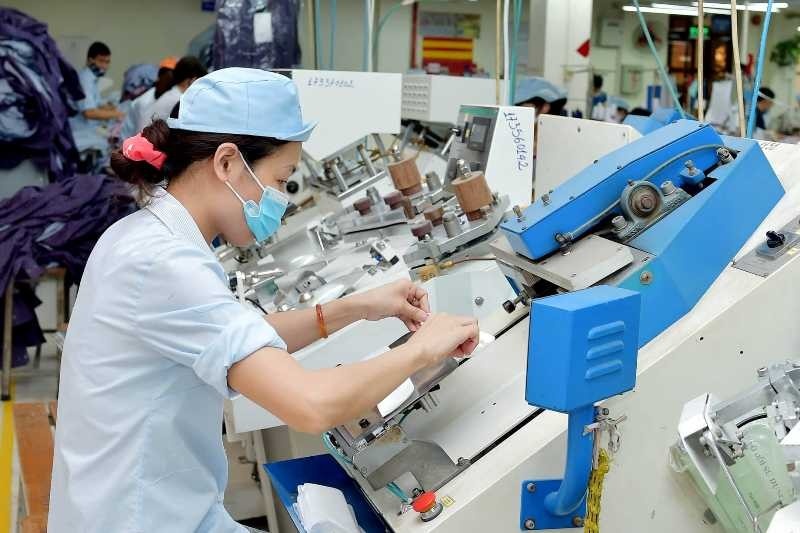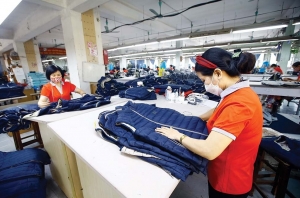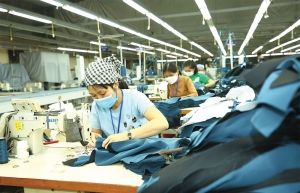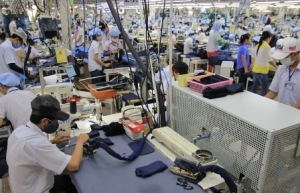Textile apparel sector increasingly going green
To reach sustainable development targets, many countries and regions are enacting stringent requirements for importing products, forcing producers to obey environmental and sustainable development requirements, including the textile and apparel sector.
Pham Van Viet, chairman of Viet Thang Jean Co., Ltd., said that to break into demanding markets such as the United States and EU, it is currently a must for export producers to shift into green production.
 |
At Viet Thang Jean, the company has entirely shifted into using high-tech applications to boost production as well as save the environment.
In the past, for denim products, the company had to use chemicals and pigments in the printing process.
Now, the firm has acquired laser printing technology to avoid doing harm to the environment.
One of its major investments $12.5 million in a process for producing 10,000 complete items, eight-time more in value compared to a conventional production line.
Similarly, Nguyen Huu Phuc, director of Fadatech JSC, said that the company uses bamboo fabric, or linen, which are deemed as environmentally friendly production materials that can be biodegradable after several years.
“As for technology, instead of using traditional methods with waste printing ink being discharged into the environment, we currently employ digital technology in printing, not using water, free from chemicals, dust and waste. After being printed, the fabric is dried and softened by heat-based and mechanical methods,” said Phuc.
Not only apparel firms, textile and material producers are also part of the trend. Many firms strive to adopt green and environmentally friendly production models that create many benefits when they join the global value chain.
Le Van Linh, head of Equipment Infrastructure division at Tran Hiep Thanh Textile Corporation, said that in 2019, the company discharged a total 57,783 tonnes of CO2 from production.
The company is committed to pulling down this volume by 29.4 per cent by 2026, despite its continual efforts for scope expansion.
Experts assume that many businesses have been aware of the benefits of going green in production, yet amid the current tough business climate with a sharp fall in order intake, investing into boosting production efficiency attached to environmental protection is causing difficulties for businesses.
Current solutions for many firms, therefore, are to make gradual investments with long-haul plans to smoothen the transformation process.
 | Apparel firms scaling down business targets Many apparel, textile and spinning firms are setting 2023 business targets far below last year's figures amid gloomy market conditions and sinking orders. |
 | Apparel groups anticipate ongoing rocky progress India and Bangladesh are competing with Vietnam for garment orders, but China is the most formidable rival, while Cambodia and Myanmar are emerging as new exporting nations. |
 | Textile apparel sector losing advantage in price competition Many producers in the textile apparel sector are on tenterhooks as export orders are increasingly shifting to other countries like Bangladesh or India for more favourable pricing. |
 | Green workforce crucial to a green economy The Vietnamese government is targeting green growth with policies and international commitments towards the green economy. Nguyen Cong Thuy, founder and CEO of HRDC, discusses the influence of the green workforce on sustainable development. |
What the stars mean:
★ Poor ★ ★ Promising ★★★ Good ★★★★ Very good ★★★★★ Exceptional
Related Contents
Latest News
More News
- Heavy industries set for pilot greenhouse gas quotas (December 25, 2025 | 10:00)
- Swedfund invests in MSME growth and climate action in Vietnam (December 19, 2025 | 11:42)
- GreenYellow brings solar energy to light up remote schools in Tuyen Quang province (December 19, 2025 | 08:00)
- Charge+, Grab partner to develop EV charging network in Vietnam (December 18, 2025 | 17:11)
- Linking sci-tech and innovation to Vietnam’s net-zero future (December 18, 2025 | 14:31)
- Driving double-digit growth through green and circular transformation in Vietnam (December 17, 2025 | 09:00)
- Standard Chartered and ACCA deepen collaboration to develop Vietnam’s talent for a sustainable future (December 15, 2025 | 18:18)
- Schaeffler reports strong early output from Dong Nai solar project (December 12, 2025 | 15:16)
- Forestry conference highlights biodiversity and sustainability goals (December 09, 2025 | 13:35)
- Home Credit honoured among top 10 sustainable companies in trade and services (December 09, 2025 | 12:18)

 Tag:
Tag:



























 Mobile Version
Mobile Version